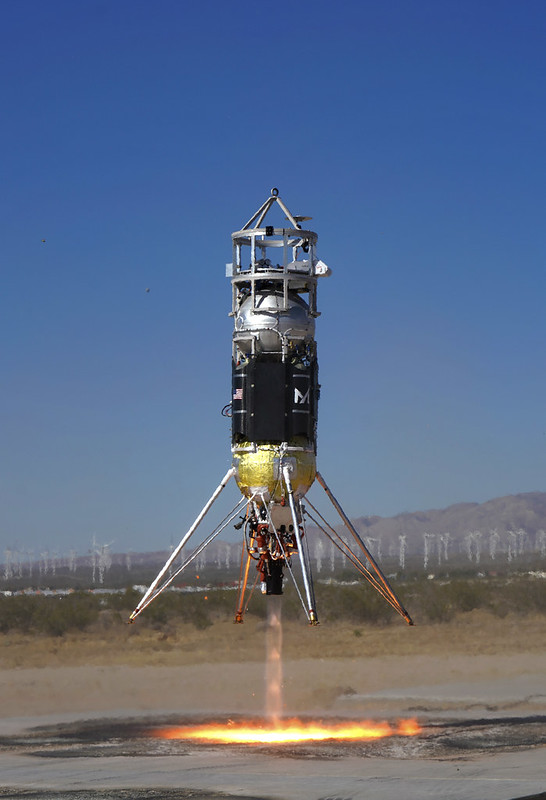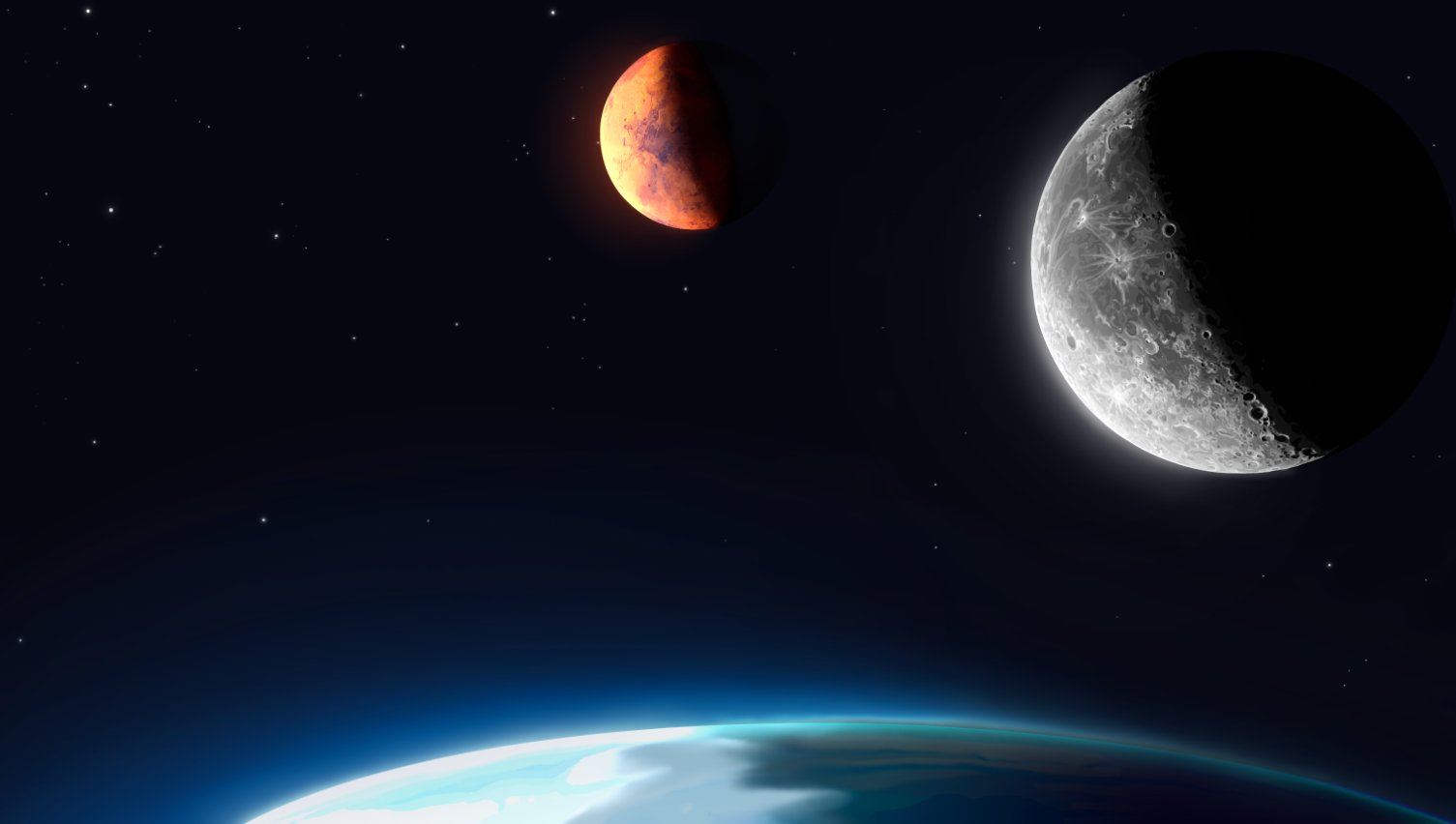University of Central Florida researchers tested an instrument designed to measure the size and speed of surface particles kicked up by the exhaust from a rocket-powered lander on the Moon or Mars. The four tethered flights on Astrobotic’s Xodiac rocket-powered lander took place in Mojave, California, from Sept. 12 through Oct. 4, 2023. Researchers tested the Ejecta STORM technology’s integration with a lander and operation in flight conditions that simulated the plume effects of a lunar lander.
Astrobotic
A research team from the University of Central Florida recently tested an instrument designed to measure the size and speed of surface particles kicked up by the exhaust from a rocket-powered lander on the Moon or Mars. Supported by NASA’s Flight Opportunities program, researchers evaluated the instrument in a series of flight tests on Astrobotic’s Xodiac rocket-powered lander in Mojave, California.
When spacecraft land on the Moon or Mars, the rocket exhaust plume creates regolith ejecta – abrasive dust and large particles moving at high speeds – that can damage the lander and surrounding structures. Understanding how a rocket engine’s exhaust affects this ejecta will help mission designers plan more effectively for lunar landings by allowing them to model the soil erosion rate, the particle size distribution, and the velocities associated with plume-surface interaction.
Researchers at the University of Central Florida developed the laser-based instrument, named Ejecta STORM (Sheet Tracking, Opacity, and Regolith Maturity), to answer this need while embracing the Flight Opportunities program’s “fly, fix, fly” ethos to quickly advance the technology.
Four tethered flights enabled researchers to test the system’s integration with a lander and operation in flight conditions that simulated the plume effects of a lunar lander. These tests build on data collected during a 2020 flight campaign leveraging Xodiac. These 2020 flight tests, funded by the program’s TechFlights solicitation, allowed researchers to measure the density and size of particles during terrestrial simulations of lunar landings.
Researchers expect the technology to inform model development and reduce risk for future lunar landings, ultimately improving mission design for rover-based planetary science missions, crewed missions to the Moon and other bodies, and in-situ resource utilization. Flight Opportunities is managed at NASA’s Armstrong Flight Research Center in Edwards, California, and is part of the agency’s Space Technology Mission Directorate.
Chloe Tuck
Armstrong Flight Research Center





























